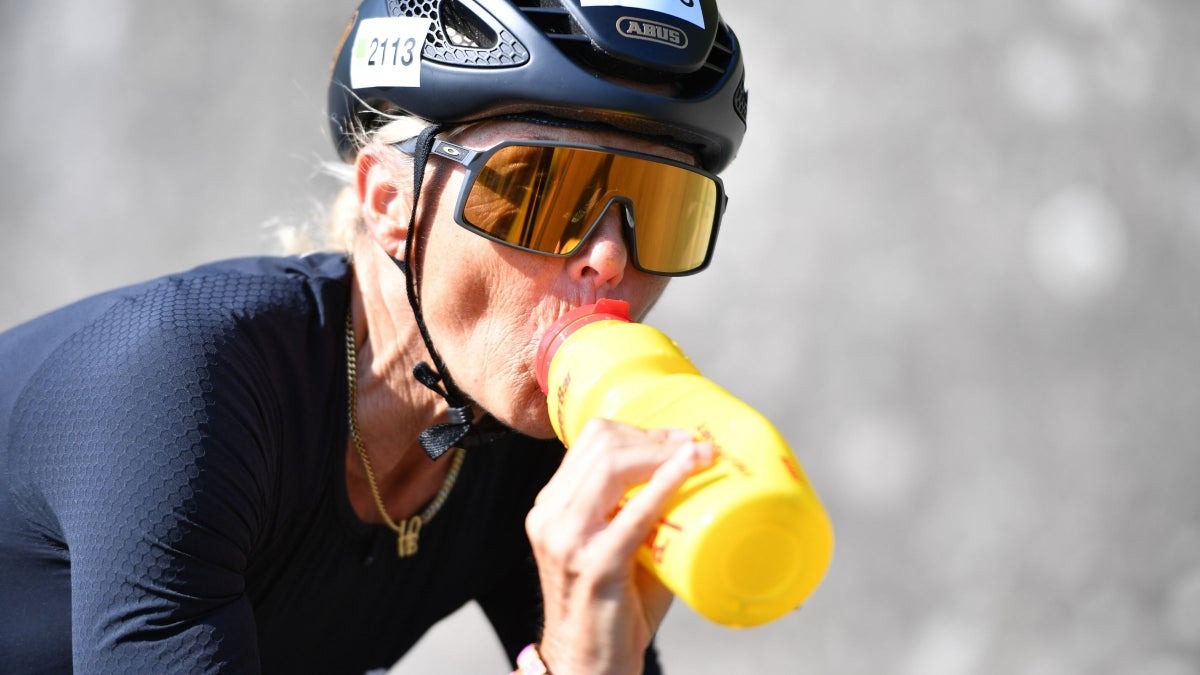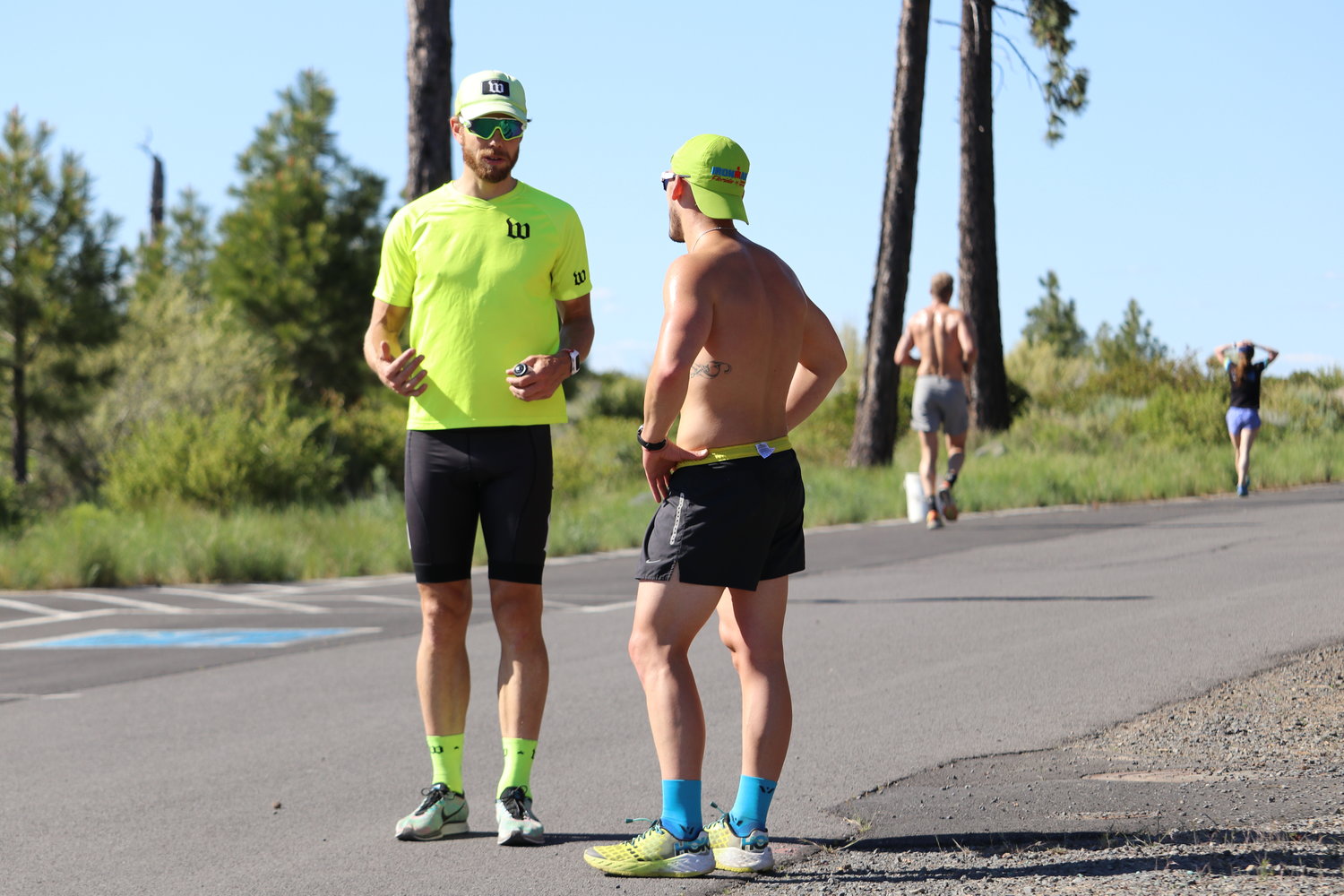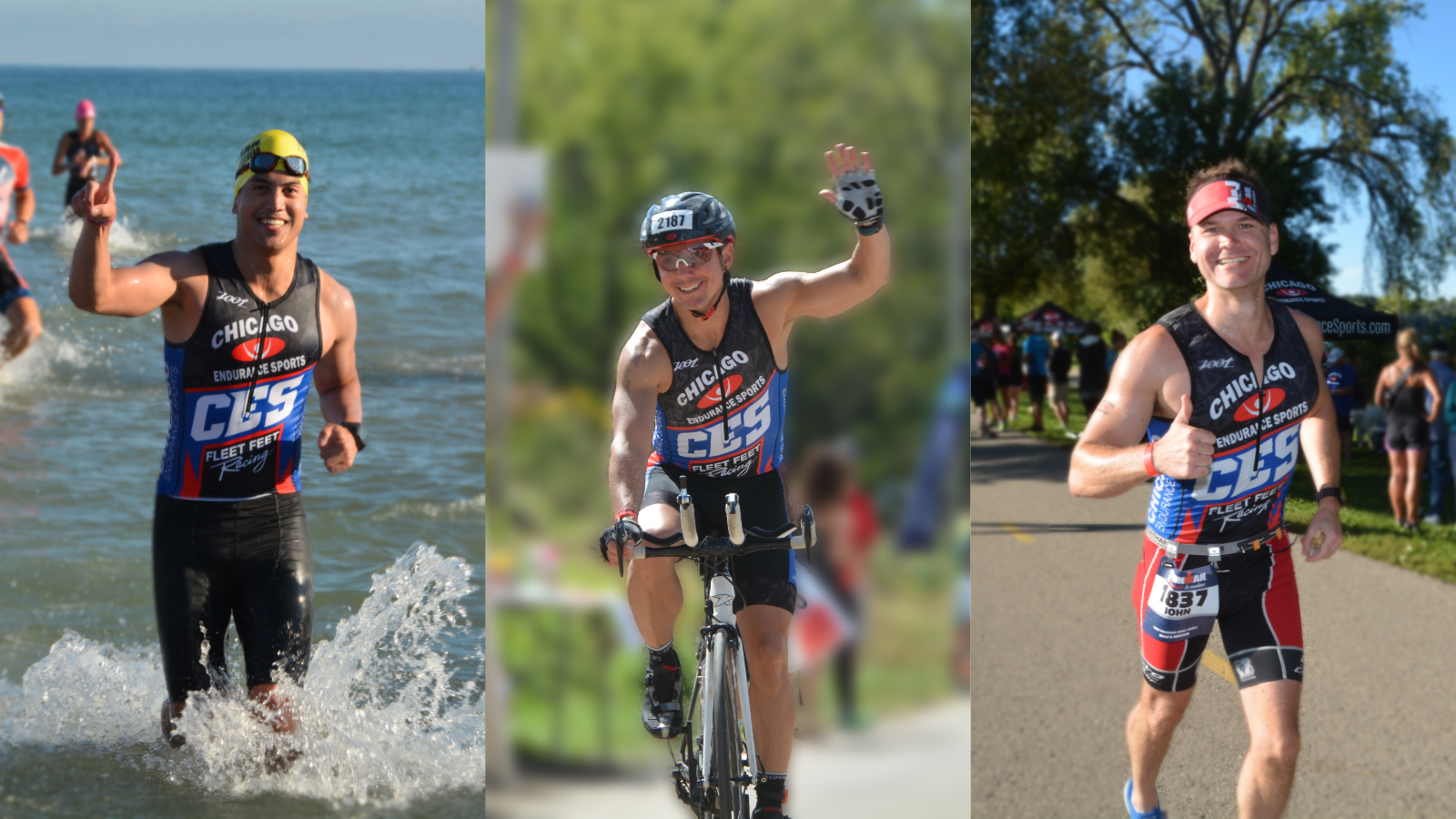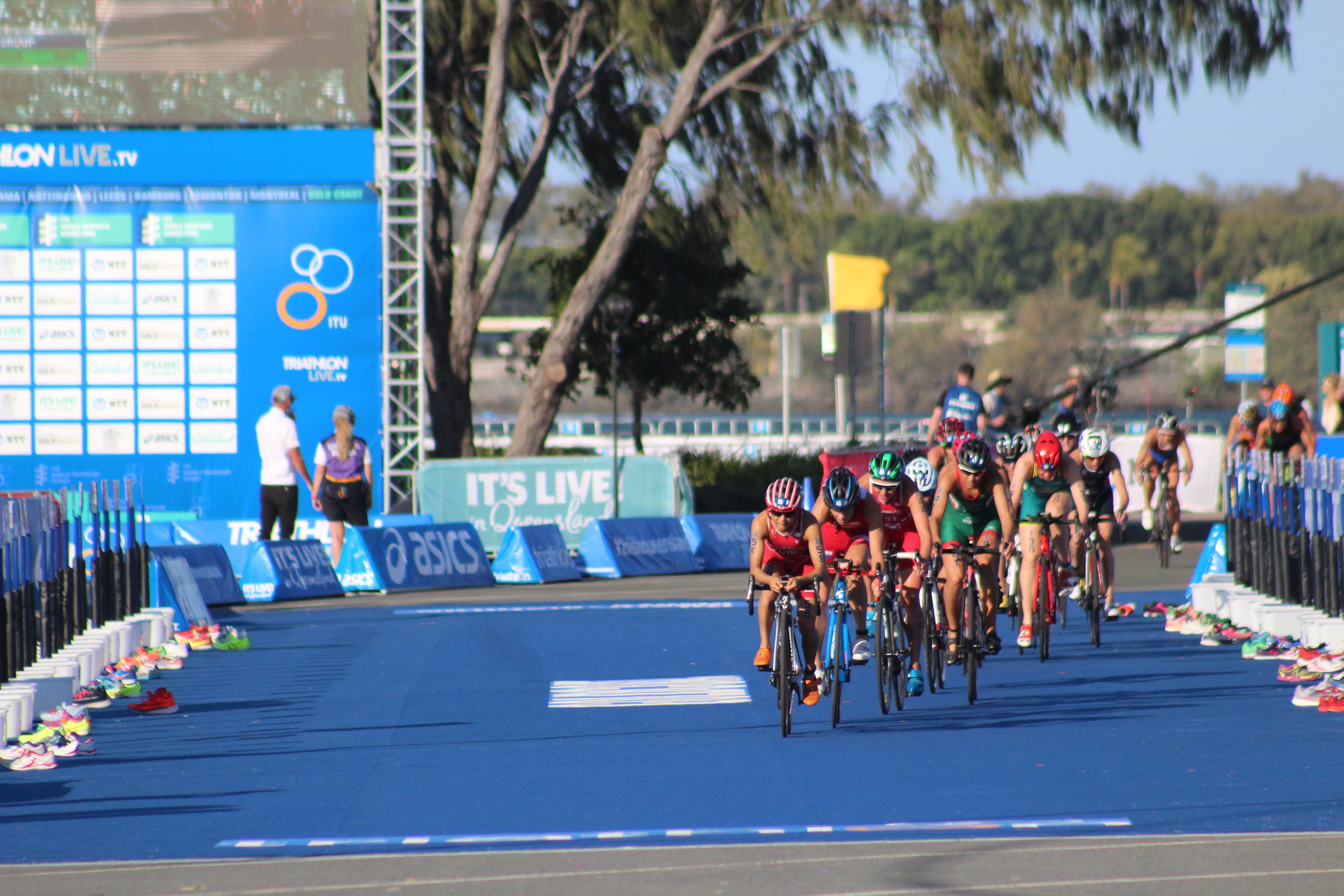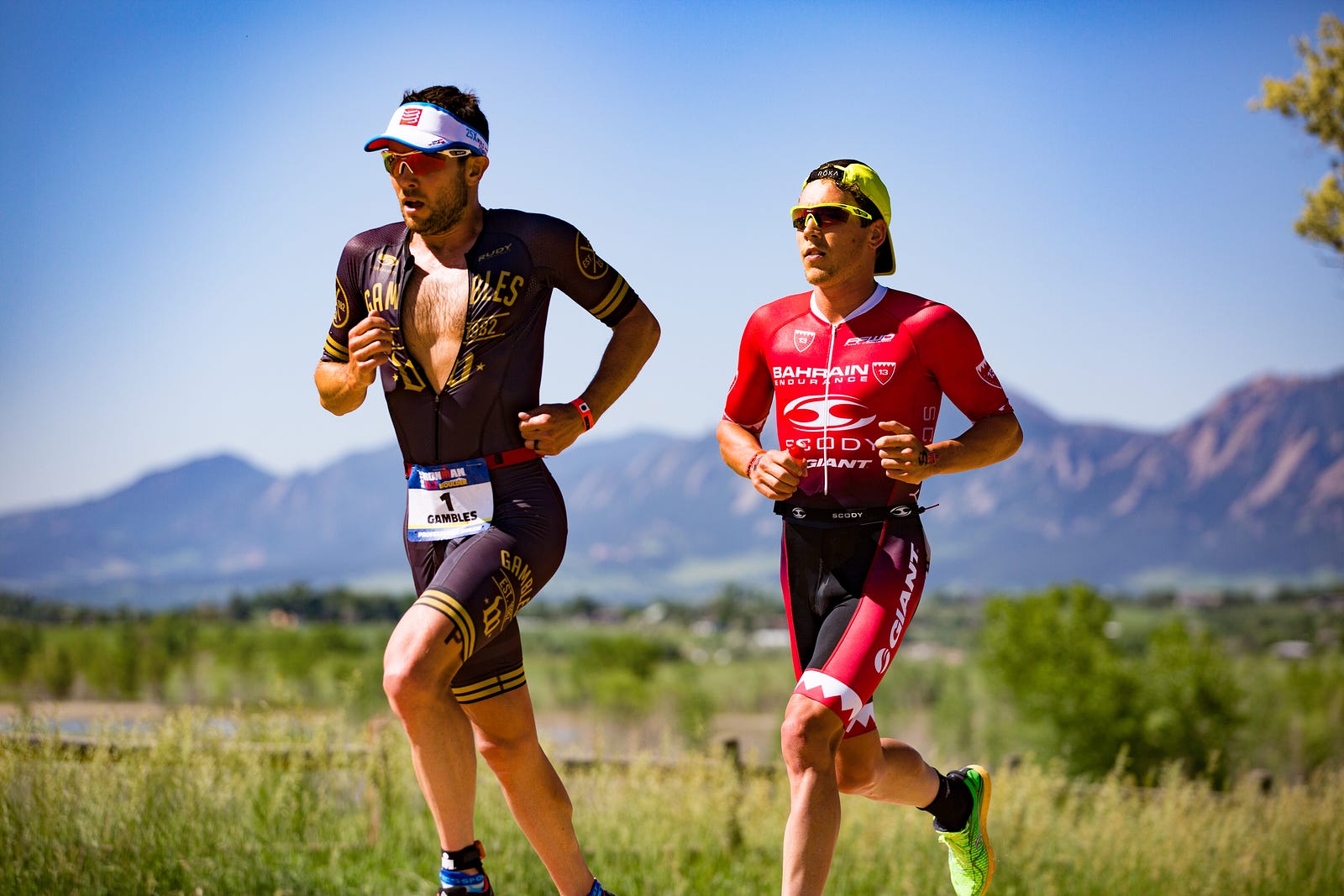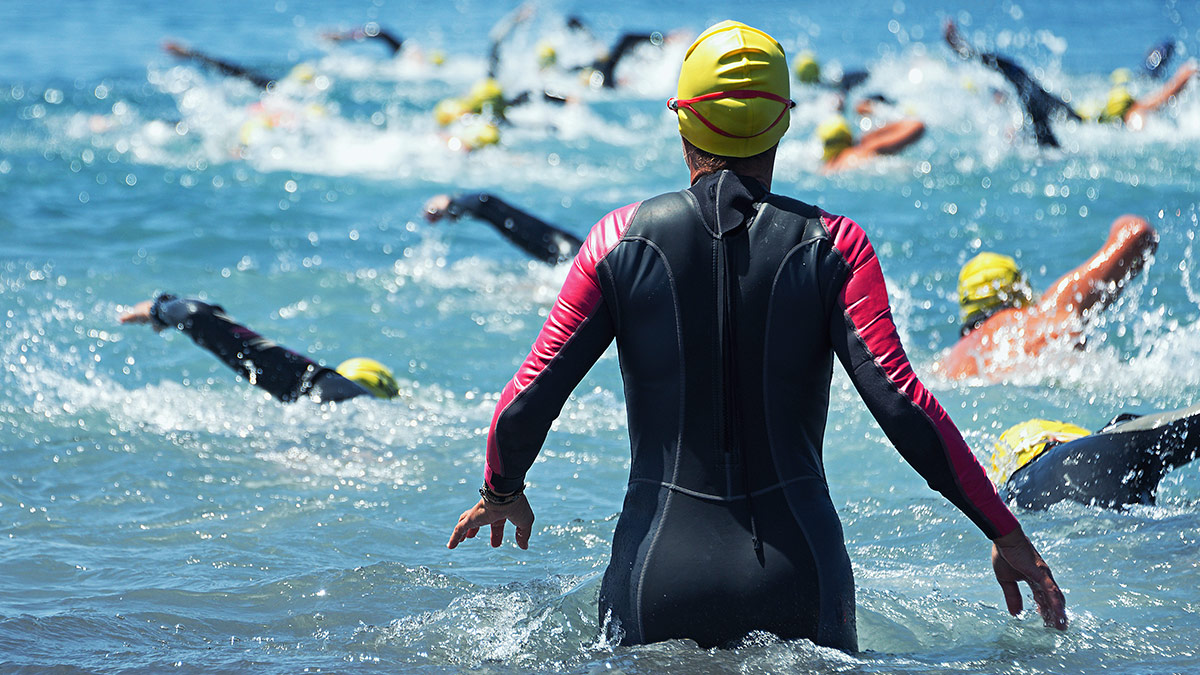Home>Misc>Featured>How To Go About Preparing For A Triathlon
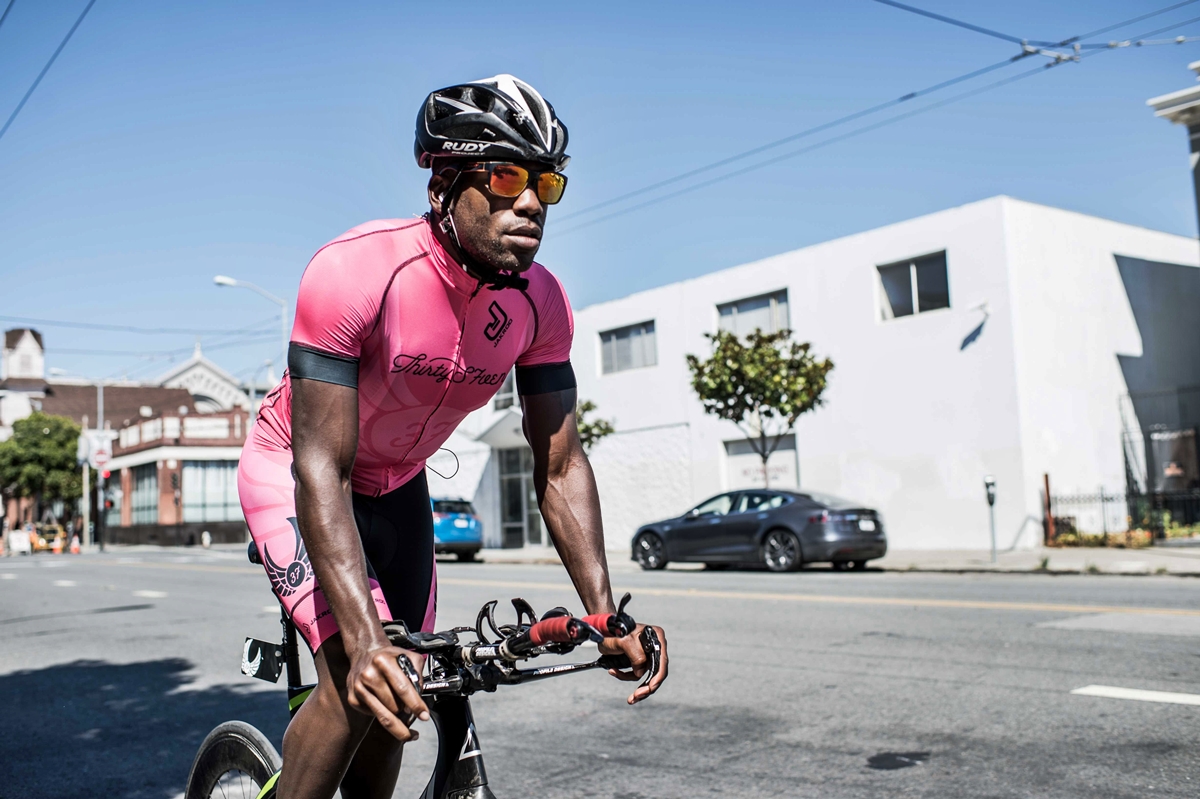

Featured
How To Go About Preparing For A Triathlon
Modified: March 2, 2024
Discover the essential steps to preparing for a triathlon in our featured guide. Get expert advice and tips to help you conquer your next triathlon.
Introduction
Welcome to the exciting world of triathlon! Whether you’re a seasoned athlete looking for a new challenge or a beginner eager to embark on your first triathlon, this comprehensive guide is here to help you navigate the preparation process. Triathlons are multi-sport events that combine swimming, cycling, and running, testing your physical endurance, mental toughness, and overall fitness.
Preparing for a triathlon requires careful planning, training, and dedication. This article will provide you with valuable insights and practical tips to help you successfully prepare for your upcoming triathlon. From setting goals and creating a training plan to selecting the right equipment and fueling your body properly, we will cover all aspects of triathlon preparation to ensure you have a successful and enjoyable race day.
Triathlons come in various distances, including sprint, Olympic, half Ironman, and Ironman. The distances vary, but the thrill and sense of accomplishment remain constant. Before you begin your training, it’s essential to determine which distance you’ll be competing in. This will help you set realistic goals and tailor your training accordingly.
Whether you’re aiming to complete your first sprint triathlon or aiming for a podium finish in an Ironman, the key to a successful journey lies in proper planning, consistent training, and maintaining a positive mindset throughout. With the right approach and a commitment to your training, you can conquer the challenges that come your way and achieve your triathlon goals.
As you delve into the world of triathlon, remember that each individual is unique, and there is no one-size-fits-all approach to training. Listen to your body, adapt your training plan as needed, and seek guidance from experienced triathletes or coaches if necessary. Remember, your journey to the finish line is as important as the destination itself.
So, buckle up and get ready to embark on an incredible journey of self-discovery, strength, and determination. In the following sections, we will delve into the essential steps you need to take to prepare for a triathlon, from setting goals and creating a training plan to honing your skills in each discipline and preparing yourself mentally for race day. Let’s dive in!
Setting Goals
Setting goals is a crucial step in preparing for a triathlon. It helps provide direction, motivation, and a sense of purpose to your training. When setting your goals, it’s important to make them specific, measurable, attainable, relevant, and time-bound (SMART). Here’s how you can set effective goals for your triathlon:
- Define Your Ultimate Goal: Start by envisioning your ultimate goal for the triathlon. Do you want to finish within a certain time? Or perhaps qualify for a specific event? Clearly define what success looks like to you.
- Break It Down: Once you have your ultimate goal in mind, break it down into smaller, manageable sub-goals. For example, if your ultimate goal is to complete an Ironman, your sub-goals could be to swim a certain distance without stopping, increase your cycling endurance, and run longer distances.
- Consider Your Current Fitness Level: Be realistic about your starting point. Assess your current fitness level and take into account any strengths or weaknesses you may have in the swimming, cycling, or running disciplines. This will help you set goals that are challenging yet achievable.
- Set Specific Milestones: Create specific milestones to track your progress throughout your training. These can be shorter distance races or personal challenges that will help you gauge your improvement and build confidence along the way.
- Keep It Measurable: Set goals that can be measured by time, distance, or any other relevant metric. This will provide you with a clear indicator of your progress and allow you to adjust your training accordingly.
- Make It Attainable: Your goals should push you out of your comfort zone, but they should still be attainable with dedication and effort. Setting unrealistic goals can lead to frustration and burnout. Gradually increase the difficulty of your goals as you progress.
- Stay Relevant: Ensure that your goals align with your overall purpose and aspirations. Keep in mind why you decided to take on this triathlon and let that drive you towards achieving your goals.
- Set a Timeline: Finally, assign a timeline to each of your goals. This will help you stay focused and ensure that you’re on track to reach your goals in time for your triathlon.
Remember, setting goals is not only about the destination but also about the journey. Embrace the process and celebrate every milestone you achieve along the way. With well-defined goals and a clear roadmap, you’ll be motivated, focused, and ready to conquer your triathlon.
Creating a Training Plan
A well-structured training plan is essential for your success in a triathlon. It helps you build endurance, improve your fitness levels, and gradually progress towards your goals. Here are some key steps to consider when creating your training plan:
- Assess Your Current Fitness Level: Before diving into a training plan, evaluate your current fitness level in each of the triathlon disciplines. This will help you determine your starting point and customize your training accordingly.
- Set Training Frequencies and Duration: Decide how often you’ll train each discipline and allocate the appropriate time for each session. This will depend on your availability, fitness level, and the amount of time you have until your triathlon.
- Incorporate Variety: To avoid overuse injuries and maintain motivation, incorporate a variety of workouts into your training plan. Include long, slow-distance sessions, interval training, strength training, and cross-training activities such as yoga or swimming.
- Progress Gradually: Gradually increase the intensity and duration of your workouts to prevent injuries and allow your body to adapt. Avoid the temptation to push too hard too soon, as this can lead to burnout or setbacks.
- Balance the Disciplines: Ensure your training plan includes a balanced focus on all three disciplines: swimming, cycling, and running. Allocate appropriate time and effort to each to develop proficiency in all areas.
- Include Rest Days: Rest and recovery are just as important as training. Incorporate rest days into your plan to allow your body to rest and repair, reducing the risk of injury and improving performance.
- Monitor and Adjust: Regularly monitor your progress and be open to adjusting your training plan as needed. Listen to your body and make modifications based on how you’re feeling and responding to the training load.
- Seek Expert Guidance: If you’re a beginner or unsure about designing your training plan, consider seeking guidance from a certified coach. They can provide personalized guidance, ensure you’re on track, and help optimize your training for the best results.
Remember that consistency is key. Stick to your training plan, even on days when motivation is low. A well-structured and consistent training plan will help you build endurance, improve your skills, and boost your confidence as you progress towards your triathlon.
Equipment and Gear
Having the right equipment and gear is essential for a successful triathlon. Here are some key considerations when selecting your equipment:
- Triathlon-Specific Apparel: Invest in triathlon-specific apparel that is designed for comfort and performance. This includes a triathlon suit or wetsuit for swimming, cycling shorts and jersey for biking, and running gear that is lightweight and breathable.
- Swim Gear: Depending on the triathlon distance and rules, you may need swim goggles, a swim cap, and a wetsuit. Research the water conditions of your race to determine if a wetsuit is necessary.
- Bike: Choose a bike that suits your needs and budget. Consider factors like bike fit, frame material, and components. Road bikes or specialized triathlon bikes are commonly used for triathlons, but any bike in good condition can work.
- Bike Accessories: Accessories such as a bike helmet, bike shoes, cycling gloves, and a bike computer for tracking your speed and distance can enhance your cycling experience.
- Running Shoes: Invest in a good pair of running shoes that provide proper support and cushioning. Get fitted at a specialty running store to find the right shoes for your foot type and running gait.
- Transition Gear: Set up a transition area to efficiently switch between disciplines. Consider items like a transition mat, towel, sunscreen, socks, and any additional equipment you may need during the transitions.
- Nutrition and Hydration: Don’t forget about nutrition and hydration equipment. Invest in a comfortable hydration belt, water bottles, energy gels, and snacks to fuel your body during training and on race day.
- Training Tools: Consider using training tools like a swim snorkel, pull buoy, paddles, foam roller, and resistance bands to enhance your training sessions and improve your technique.
- Practice with Your Gear: Before race day, make sure to practice using all of your gear during your training sessions. This will help you become familiar with the equipment and ensure everything is set up correctly.
Remember, while having the right equipment is important, it’s equally crucial to prioritize comfort and safety over having the latest and most expensive gear. Take the time to try out different options, seek advice from experienced triathletes, and make choices based on your individual needs and budget.
Nutrition and Hydration
Nutrition and hydration play a vital role in your performance and overall experience during a triathlon. Proper fueling will provide you with the energy and endurance needed to complete the race. Here are some key tips to consider:
- Pre-Race Nutrition: Fuel your body with a balanced meal containing carbohydrates, proteins, and healthy fats a few hours before the race. This will provide you with sustained energy levels and aid in muscle recovery.
- Hydration: Begin hydrating well in advance of the race to ensure proper hydration levels. During training and on race day, maintain a consistent intake of fluids to prevent dehydration. Drink water and electrolyte-rich beverages, such as sports drinks, to replenish lost fluids.
- Intra-Race Fueling: During the race, consume foods and fluids that are easily digestible and provide a quick source of energy. Energy gels, sports drinks, bananas, and energy bars are popular choices. Practice with different options during your training to determine what works best for you.
- Post-Race Recovery: After completing the triathlon, focus on proper recovery by consuming a mix of carbohydrates and protein within the first 30 minutes to facilitate muscle repair and glycogen replenishment. Additionally, continue hydrating to replace fluids lost during the race.
- Periodize Your Nutrition: Adjust your nutrition plan based on the length and intensity of your training sessions. Longer workouts may require more carbohydrates for sustained energy, while shorter workouts may require less fuel.
- Dietary Considerations: Tailor your nutrition plan to suit your dietary preferences and restrictions. Experiment with different foods to find what works best for your body and digestive system. Consult with a registered dietitian or sports nutritionist for personalized guidance.
- Practice Nutrition Strategies: Incorporate fueling strategies into your training sessions to determine what works best for you. Practice consuming fluids and food items while swimming, biking, and running to simulate race conditions.
- Listen to Your Body: Pay attention to your body’s cues during training and adjust your nutrition and hydration accordingly. Everybody is different, so it’s essential to find what works best for you through trial and error.
- Avoid Experimenting on Race Day: Stick to the nutrition and hydration strategies you’ve practiced during training. Race day is not the time to try new foods or drinks that your body is not accustomed to.
Remember, proper nutrition and hydration are not only important during the triathlon but also throughout your training. Consistency in fueling strategies will help optimize your performance and keep you feeling strong and energized on race day.
Transition Training
Transition training is often overlooked by beginner triathletes, but it plays a crucial role in your overall race performance. The transitions between the swim to bike and bike to run can make a significant impact on your time and overall experience. Here are some key tips to help you improve your transition skills:
- Practice Transition Setups: Set up a mock transition area during your training sessions to simulate race conditions. Lay out your gear in a logical and organized manner, ensuring everything is easily accessible.
- Know the Course Layout: Familiarize yourself with the layout of the transition area and the bike-to-run exit. Study the course map to know where to locate your bike and where the run start is located.
- Plan Your Transitions: Visualize and plan your transitions in advance. Mentally rehearse the sequence of actions you need to take when transitioning from swim to bike and bike to run.
- Master Quick Shoe Changes: Practice slipping your feet quickly into your cycling shoes and running shoes. Use elastic laces or speed laces for your running shoes to save time and avoid the hassle of tying shoelaces.
- Use a Towel: Lay a towel in your transition area to keep your feet clean and dry. This will make it easier to put on your socks and shoes and reduce the risk of blisters or discomfort.
- Try Brick Training: Incorporate brick training into your routine, which involves training back-to-back disciplines without a break. This will help you get accustomed to the feeling of transitioning from one activity to another.
- Practice Mounting and Dismounting: Learn how to smoothly mount and dismount your bike to save time during the transitions. Practice this skill in a safe and controlled environment.
- Time Your Transitions: During your training sessions, time yourself during the transitions to identify areas where you can save time. Look for ways to streamline your movements and minimize unnecessary steps.
- Stay Focused: Keep your mind focused during the transitions. Avoid distractions and stay in the present moment, focusing on the task at hand.
- Visualize a Smooth Transition: Use visualization techniques to imagine yourself smoothly transitioning from one discipline to another. Visualize the process going smoothly and successfully.
By incorporating transition training into your routine, you’ll be able to shave off valuable seconds or even minutes from your overall race time. With practice and familiarity, your transitions will become more efficient, allowing you to maintain momentum and perform at your best throughout the entire triathlon.
Swim Training
Swimming is often considered the most challenging discipline for many triathletes. It requires technique, endurance, and comfort in the water. Here are some key tips to help you improve your swim training:
- Assess Your Swimming Ability: Determine your current swimming ability and any areas for improvement. Consider taking swimming lessons or working with a swim coach to refine your technique.
- Focus on Technique: Prioritize technique over speed. Work on your body position, breathing, stroke technique, and kick to become more efficient in the water. Incorporate drills into your training sessions to isolate specific aspects of your stroke.
- Include Open Water Practice: If your triathlon includes an open water swim, make sure to practice in similar conditions. Swim in lakes, rivers, or the ocean to get accustomed to the differences in water temperature, currents, and visibility.
- Practice Bilateral Breathing: Develop the ability to breathe comfortably on both sides to avoid an imbalanced stroke and enhance your visibility in open water.
- Incorporate Interval Training: Include interval training in your swim workouts to build endurance and improve your speed. Alternate between shorter, faster intervals and longer, slower intervals to challenge your body and improve your cardiovascular fitness.
- Simulate Race Conditions: During your training, simulate race conditions by swimming with a wetsuit or in a crowded pool to get comfortable with the potential challenges and distractions you may encounter on race day.
- Include Open Water Swims: Practice open water swims as part of your training to get a feel for swimming with limited visibility and in unpredictable conditions. This will help build your confidence and adaptability.
- Build Endurance: Gradually increase the distance of your swim workouts to build endurance. Start with shorter distances and progressively work your way up, allowing your body time to adapt to the increased training load.
- Interval Training: Mix up your swim workouts with various types of intervals, such as sprints, moderate-paced swims, and distance swims. This will help improve your speed, endurance, and overall swim performance.
- Practice Transitions: Incorporate practicing transitions from the swim to bike into your swim training. This will help you become familiar with the feeling of transitioning from the water to the bike and improve your overall race performance.
Remember, consistency and practice are key to improving your swimming skills. Dedicate regular time to your swim training and seek feedback from experienced swimmers or coaches to help fine-tune your technique. With persistence and training, you’ll gain confidence and become a stronger swimmer for your triathlon.
Bike Training
Biking is a crucial element of triathlon and requires both physical strength and technical skill. Here are some key tips to help you improve your bike training:
- Get a Proper Bike Fit: Before you start training, make sure your bike is properly fitted to your body. This will improve your comfort, efficiency, and prevent unnecessary strain or injuries.
- Start with Base Miles: Begin your bike training with base miles to build your endurance and strengthen your legs. Focus on maintaining a steady pace and gradually increase your mileage over time.
- Incorporate Interval Training: Include interval training in your bike workouts to improve your speed and power. Incorporate intervals of various intensities, such as hill sprints, tempo rides, and intervals based on specific heart rate or power zones.
- Practice Hill Climbing: Find hilly routes or climbs to incorporate into your training. Focus on maintaining good form, keeping a consistent cadence, and utilizing proper gear selection when climbing.
- Work on Pedaling Technique: Practice pedaling in a smooth and circular motion, applying pressure throughout the entire pedal stroke. This will maximize power output and reduce strain on your joints.
- Improve Bike Handling Skills: Practice bike handling skills, such as maneuvering around obstacles, cornering, and descending safely. This will improve your confidence and control during the race.
- Train in Different Terrains: Vary your routes to simulate race conditions. Train on flat roads, rolling hills, and challenging terrains to prepare yourself for any course you may encounter during the triathlon.
- Practice Transitions: Include transition training from the bike to run to adapt your body to the feeling of transitioning from one discipline to another. Practice transitioning quickly and efficiently to optimize your overall race performance.
- Invest in Proper Cycling Gear: Wear appropriate cycling gear, including a helmet, cycling shorts, and a comfortable jersey. Invest in cycling shoes that clip into your pedals for better power transfer and control.
- Maintain and Inspect Your Bike: Regularly maintain and inspect your bike to ensure it’s in good working condition. Check your tire pressure, brakes, gears, and chain regularly to avoid any issues during training or on race day.
Remember, consistent training and gradual progression are key to improving your biking skills. Focus on building both strength and endurance through varied workouts, and regularly assess and adjust your training plan based on your progress and goals. By investing time and effort into your bike training, you’ll become a stronger and more confident cyclist for your triathlon.
Run Training
The run portion of a triathlon is the final discipline and can greatly impact your overall performance. Here are some key tips to help you improve your run training:
- Gradual Progression: Begin your run training gradually, especially if you are a beginner or returning from an injury. Start with shorter distances and gradually increase your mileage to avoid overexertion and reduce the risk of injury.
- Mix Up Your Workouts: Incorporate a variety of running workouts into your training plan. Include long runs to build endurance, interval training to improve speed, and tempo runs to enhance your overall cardiovascular fitness.
- Include Brick Workouts: Incorporate brick workouts into your training, where you transition from the bike to the run. This helps your body adapt to the sensation of running after cycling and improves your overall race performance.
- Focus on Cadence: Work on increasing your running cadence (the number of steps you take per minute) to improve your running efficiency and reduce the risk of injury. Aim for a cadence of around 180 steps per minute.
- Practice Pacing: Learn to pace yourself during runs. Start with a comfortable pace and gradually increase your speed as you build endurance. Practice running at your goal race pace during training to become familiar with the intensity.
- Include Hill Training: Incorporate hill training into your routine to build leg strength and improve your overall running performance. This will help you tackle inclines during the race with more ease.
- Strengthen Your Core: Cross-train with exercises that target your core muscles, such as planks, Russian twists, and hip bridges. A strong core improves your running form, stability, and overall efficiency.
- Recovery Runs: Include recovery runs in your training plan. These shorter, easy-paced runs help promote active recovery, improve blood circulation, and reduce muscle soreness.
- Practice Mental Toughness: Train your mental toughness during runs to prepare for the physical and mental challenges of race day. Use positive self-talk, visualization techniques, and goal-setting strategies to stay focused and motivated.
- Use Proper Running Shoes: Invest in a good pair of running shoes that provide the right support and cushioning for your feet. Choose shoes that are specific to your running style, foot shape, and pronation.
Remember, consistency, gradual progression, and proper form are key to improving your run performance. Listen to your body, as proper rest and recovery are just as important as the training itself. With dedicated training and commitment, you’ll become a stronger and more efficient runner for your triathlon.
Mental Preparation
Mental preparation is a crucial aspect of triathlon training. Building mental toughness and developing a positive mindset can greatly enhance your performance on race day. Here are some key tips to help you with your mental preparation:
- Visualize Success: Use visualization techniques to imagine yourself successfully completing the triathlon. Visualize each stage of the race, including the start, transitions, and crossing the finish line. This creates a positive mental image and boosts confidence.
- Set Realistic Expectations: Set realistic expectations for yourself and avoid putting unnecessary pressure on yourself. Focus on giving your best performance rather than comparing yourself to others.
- Practice Mindfulness: Incorporate mindfulness techniques into your training and race preparation. Techniques such as deep breathing, meditation, and staying present in the moment can help you stay focused and control anxiety or nervousness.
- Stay Positive: Maintain a positive attitude throughout your training and on race day. Replace negative thoughts with positive affirmations, and remind yourself of your progress and accomplishments.
- Develop a Mantra: Create a motivational mantra or phrase that resonates with you and repeats it to yourself during challenging moments. This can help you stay focused, motivated, and boost confidence.
- Break the Race into Smaller Goals: Rather than being overwhelmed by the entire race, break it down into smaller, manageable goals. Focus on completing each discipline, reaching each transition, and taking it one step at a time.
- Practice Mental Resilience: During training, intentionally put yourself in challenging situations to build mental resilience. Push through discomfort, fatigue, and tough conditions to strengthen your mental toughness.
- Refocus on Technique: If negative thoughts arise during the race, refocus your attention on your technique. Concentrate on maintaining proper form, breathing, and pacing to redirect your focus and regain control.
- Embrace the Journey: Enjoy the process and embrace the journey of training for a triathlon. Celebrate small victories, milestones, and personal growth along the way. Triathlons are not just about crossing the finish line; they are about the entire experience.
- Expect and Embrace Challenges: Anticipate that there may be unexpected challenges during the race. Mentally prepare yourself to adapt and overcome obstacles, knowing that they are part of the journey.
- Seek Support and Encouragement: Surround yourself with a supportive network of family, friends, or fellow triathletes who uplift and encourage you throughout your training and on race day.
Remember, racing a triathlon is as much a mental endeavor as it is a physical one. The ability to stay positive, focused, and mentally strong can greatly impact your overall performance. Cultivate a positive mindset, practice mental resilience, and believe in yourself. With a strong mental game, you’ll be better equipped to conquer any challenges that arise during the race and achieve your triathlon goals.
Injury Prevention
Injury prevention should be a priority during your triathlon training to ensure you stay healthy and perform at your best. Here are some key tips to help you prevent injuries:
- Gradual Progression: Gradually increase the intensity, duration, and frequency of your training sessions to allow your body to adapt and minimize the risk of overuse injuries.
- Listen to Your Body: Pay attention to any warning signs or discomfort in your body. If you experience pain or persistent discomfort, take a break and seek medical advice before continuing your training.
- Warm Up and Cool Down: Always warm up before your training sessions with dynamic stretches and activities to increase blood flow and prepare your muscles. Likewise, cool down with static stretches to promote flexibility and reduce muscle soreness.
- Strength Training: Incorporate strength training exercises into your routine to build muscular strength and balance. Focus on core strength, stability, and strengthening the muscles supporting your major joints.
- Cross-Training: Engage in cross-training activities to minimize impact on specific muscle groups and reduce the risk of overuse injuries. Activities like swimming, cycling, yoga, or Pilates can provide a valuable break from constant pounding on your joints.
- Proper Technique: Ensure you are using proper technique and form in each discipline. This includes maintaining good posture, using the correct body mechanics, and seeking guidance from qualified coaches or trainers.
- Rest and Recovery: Allow ample time for rest and recovery between training sessions. Your body needs time to repair and rebuild to avoid overtraining and reduce the risk of injuries.
- Proper Nutrition: Maintaining a well-balanced diet provides your body with the nutrients it needs for optimal performance and injury prevention. Ensure you are consuming enough calories, protein, and micronutrients to support your training and recovery.
- Stay Hydrated: Proper hydration is crucial for your overall health and injury prevention. Drink plenty of fluids throughout the day, especially during and after your training sessions.
- Invest in Quality Gear: Use appropriate gear and equipment that fit properly and support your body. This includes well-fitting shoes, supportive cycling gear, and a properly fitted helmet to protect yourself during training and on race day.
- Regular Check-ups: Schedule regular check-ups with a healthcare professional to monitor your overall health, address any concerns, and receive guidance specific to your needs.
Remember, preventing injuries is crucial for maintaining consistency in your training and achieving your triathlon goals. Prioritize your well-being, listen to your body, and take necessary measures to prevent injuries. By training smart and taking care of yourself, you’ll be able to enjoy the journey while minimizing the risk of setbacks or interruptions due to injuries.
Race Day Strategies
Race day is the culmination of your triathlon journey, and having effective strategies in place can help you perform at your best. Here are some key race day strategies to consider:
- Arrive Early: Arrive at the race venue early to familiarize yourself with the layout, set up your transition area, and ensure you have ample time for any last-minute preparations.
- Follow a Pre-Race Routine: Develop a pre-race routine that includes activities like warming up, visualizing the race, and mentally preparing yourself for the challenges ahead. Stick to this routine to establish a sense of familiarity and calmness.
- Stay Organized: Organize your gear and lay it out in a methodical manner in the transition area. Have a checklist to ensure you have everything you need and that all equipment is in working order.
- Manage Nerves: It’s natural to feel nervous before a race. Use techniques like deep breathing, positive self-talk, and visualization to manage pre-race nerves and stay focused on your race plan.
- Pace Yourself: Start the race at a comfortable pace that allows you to settle into a rhythm. Avoid getting caught up in the excitement and going out too fast, as this can lead to burnout later in the race.
- Stick to Your Nutrition Plan: Follow the nutrition and hydration plan you’ve practiced during your training. Consume small amounts of fuel at regular intervals to maintain energy levels throughout the race.
- Stay Mentally Focused: Maintain mental focus and concentration throughout the race. Break the race into smaller segments and set mini-goals to keep yourself motivated and engaged.
- Adapt to Race Conditions: Be prepared to adapt your race strategies based on the conditions you encounter on race day. Adjust your pace, tactics, and fueling as needed to handle factors like weather, course terrain, and unexpected challenges.
- Use Transitions Efficiently: Practice smooth and efficient transitions between disciplines. Minimize the time spent in the transition area by having a plan, organizing your gear effectively, and mentally rehearsing the transitions.
- Stay Positive: Encourage yourself with positive self-talk and maintain a positive attitude throughout the race. Embrace the challenges, stay focused on your goals, and celebrate each milestone as you progress through the race.
- Enjoy the Experience: Remember to enjoy the race day experience. Take in the atmosphere, cheer on your fellow athletes, and celebrate your achievements, regardless of the outcome.
Every race is unique, and it’s important to adapt these strategies to suit your own preferences and the specific conditions of your triathlon. Find what works best for you through trial and error, and trust in your training. With effective race day strategies and a positive mindset, you’ll be well-prepared to tackle your triathlon and cross the finish line with pride.
Conclusion
Congratulations! You have now learned essential strategies and tips to prepare yourself for a triathlon. From setting goals and creating a training plan to fine-tuning your techniques in swimming, biking, and running, you are well-equipped to embark on this incredible journey.
Remember that triathlon training is a holistic process that requires dedication, consistency, and a positive mindset. It challenges your physical abilities while also nurturing your mental resilience. Embrace the journey, celebrate small victories along the way, and never lose sight of the reasons why you decided to take on this challenge in the first place.
As you continue your training, do not forget about proper nutrition, hydration, and injury prevention. Take care of your body, listen to its needs, and seek professional guidance whenever necessary. Build a support system of like-minded individuals who can cheer you on and provide encouragement throughout your training and on race day.
When race day arrives, trust in your preparation, follow your race day strategies, and remember to enjoy the experience. Triathlons are not just about the finish line; they are about the personal growth, resilience, and the friendships you make along the way.
Whether you are a beginner or a seasoned triathlete, the journey towards a triathlon is an exhilarating one. Embrace the challenges, savor the victories, and revel in the sense of accomplishment as you cross the finish line. Triathlons push your limits, challenge your abilities, and unlock your potential, ultimately transforming you into a stronger, more determined individual.
So, lace up your shoes, hop on your bike, and dive into the water. Your triathlon journey awaits. Good luck!

